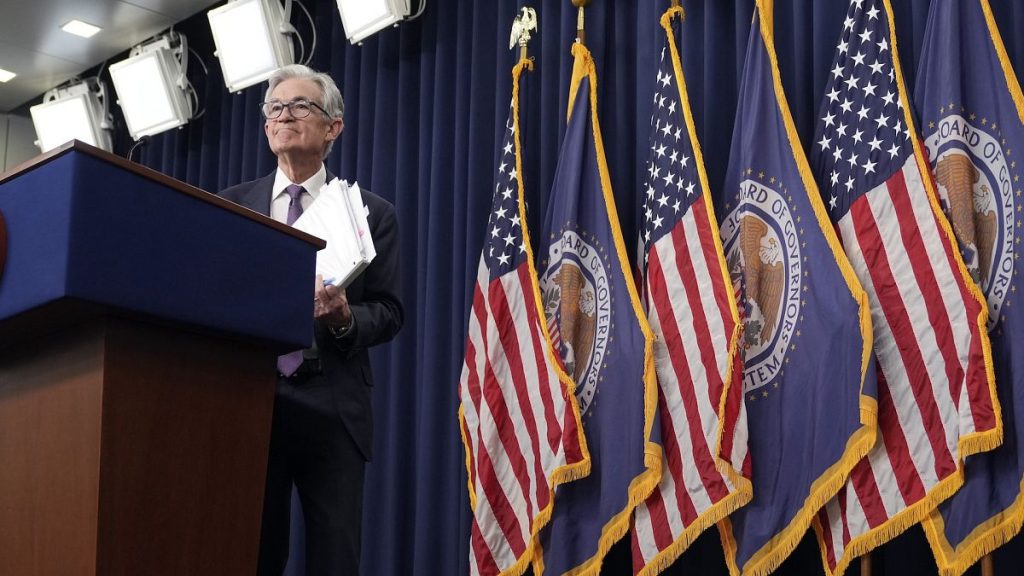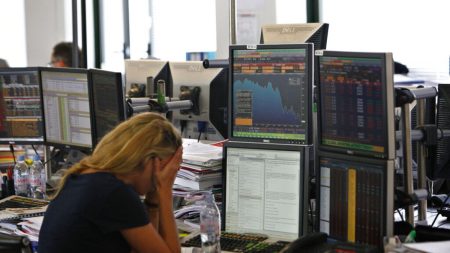The December Federal Reserve meeting triggered a significant market downturn, defying investor expectations for a more dovish outlook. The Fed implemented a widely anticipated 25-basis-point rate cut, bringing the target range to 4.25%-4.50%. However, accompanying economic projections signaled a more hawkish stance than anticipated, forecasting only two additional rate cuts in 2025, a sharp contrast to the four cuts projected in September. Fed Chair Jerome Powell reinforced this hawkish position during the press conference, emphasizing a cautious approach to future rate cuts and asserting that the Fed is now “significantly closer to neutral,” the interest rate level that neither stimulates nor hinders economic growth. This cautious approach, fueled by concerns about persistent inflation, significantly dampened market sentiment, leading to a broad sell-off across various asset classes.
Powell’s comments underscored the Fed’s shift in focus towards managing inflationary pressures and maintaining a data-driven approach to monetary policy. Despite acknowledging the US economy’s resilience compared to its global counterparts, Powell highlighted the Fed’s upwardly revised inflation forecasts. The central bank now projects headline inflation to reach 2.5% in 2025, up from the previous 2.1% projection, with core inflation, excluding volatile food and energy prices, also expected to hit 2.5%. Powell reiterated the Fed’s commitment to achieving its 2% inflation target, although he conceded it might take “another year or two” to reach this goal. This emphasis on inflation control, coupled with the reduced expectation of future rate cuts, significantly contributed to the market’s negative reaction.
The market response to the Fed’s announcement and Powell’s subsequent remarks was swift and dramatic. Major US stock indices experienced substantial declines, with the S&P 500 plunging 3.03%, the Nasdaq 100 sinking 3.74%, and the Dow Jones Industrial Average dropping 2.54%. These marked the steepest single-day declines for the S&P 500 and the Dow since September 2022, signaling a significant shift in investor sentiment. The CBOE Volatility Index, a key measure of market fear and uncertainty, spiked nearly 60%, reflecting growing investor anxiety about the Fed’s less accommodative monetary policy outlook. This sell-off was broad-based, affecting various sectors, with technology stocks, including Tesla, experiencing particularly steep declines.
The impact of the Fed’s announcements extended beyond the equity markets, significantly affecting currency and commodity markets. The US dollar surged to two-year highs against major currencies, with the euro experiencing a 1.33% decline against the dollar. The dollar index (DXY), which measures the greenback’s strength against a basket of other currencies, also climbed to a two-year peak. Commodities, including gold and silver, faced downward pressure, with gold falling 2.3% and silver tumbling 3.9% to a five-week low. These movements reflected a flight to safety towards the US dollar amid concerns about the Fed’s hawkish stance and its potential impact on global economic growth.
The bond market also reacted strongly to the Fed’s announcements, with Treasury yields rising sharply. The 10-year Treasury yield, a benchmark for borrowing costs, climbed 12 basis points to 4.52%, its highest level since late May. This increase in yields reflects investors’ reassessment of the outlook for future interest rate cuts. With the Fed signaling fewer cuts than previously anticipated, investors adjusted their expectations, leading to higher yields. This rise in yields has broader implications for the economy, potentially increasing borrowing costs for businesses and consumers.
Finally, the cryptocurrency market also felt the impact of the Fed’s announcements, particularly after Powell addressed speculation about the potential for a US government-backed Bitcoin reserve. Powell firmly rejected the idea, citing legal constraints under the Federal Reserve Act and stating unequivocally that the Fed has “no intention of pursuing changes to that law.” This statement effectively dispelled any lingering hopes for government support of Bitcoin, contributing to a more than 5% decline in its price. This decline underscores the sensitivity of the cryptocurrency market to regulatory pronouncements and macroeconomic factors, further highlighting the volatile nature of digital assets.














